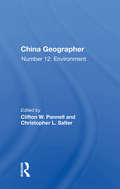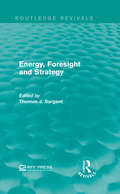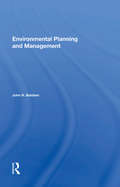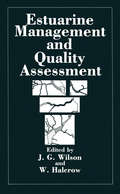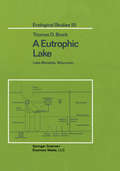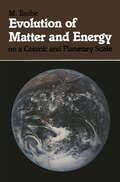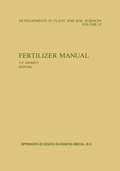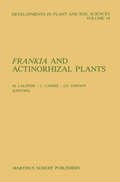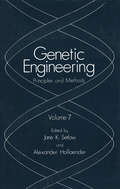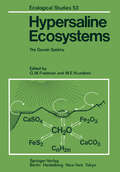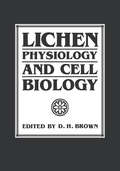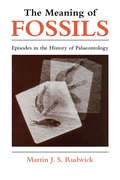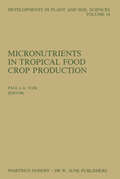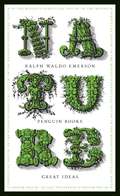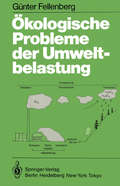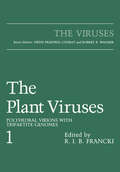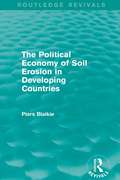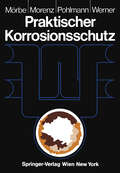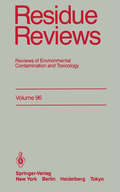- Table View
- List View
China Geographer: No. 12: The Environment
by Clifton W. PannellThis book seeks to promote better understanding of China through improved knowledge of its geography. It presents papers on a variety of environmental topics in China ranging from earthquake hazards to nature preserves. New research techniques and analytical methodologies are also presented.
Energy, Foresight and Strategy (Routledge Revivals)
by S. Rao Aiyagari Zvi Eckstein Martin S. Eichenbaum Dennis Epple Lars Peter Hansen Raymond G. Riezman William RoberdsThe essays in Energy, Foresight and Strategy apply rational expectation theory to various energy markets with the intention of discussing issues relevant to analysis and decision making in the whole of the energy field. Originally published in 1985, issues explored include oil exportation, energy prices and embargoes, both focussing on how past regulation has created issues in the market at the time of publication as well as creating models to ascertain the futures of various energy resources. This title will be of interest to students of Environmental Studies and Economics.
Energy, Foresight and Strategy (Routledge Revivals)
by Thomas J. SargentThe essays in Energy, Foresight and Strategy apply rational expectation theory to various energy markets with the intention of discussing issues relevant to analysis and decision making in the whole of the energy field. Originally published in 1985, issues explored include oil exportation, energy prices and embargoes, both focussing on how past regulation has created issues in the market at the time of publication as well as creating models to ascertain the futures of various energy resources. This title will be of interest to students of Environmental Studies and Economics.
Environmental Planning And Management
by John H BaldwinA comprehensive overview and discussion of all major aspects of environmental planning and management, Professor Baldwin's textbook highlights the causes and interrelationships of environmental problems, emphasizing the important economic and ecological functions of the land as the stage for all human activities and the "source" and "sink" for all
Environmental Planning And Management
by John H BaldwinA comprehensive overview and discussion of all major aspects of environmental planning and management, Professor Baldwin's textbook highlights the causes and interrelationships of environmental problems, emphasizing the important economic and ecological functions of the land as the stage for all human activities and the "source" and "sink" for all
Estuarine Management and Quality Assessment
by J. WilsonThis volume presents the papers given at the meeting "Estuarine Management and Quality Assessment" held at Trinity College, Dublin in September 1983. The meeting was organised by the Environmental Sci ences Unit, TCD and the Estuarine and Brackish-Water Sciences Associ ation and was attended by delegates from the United Kingdom, Ireland, France, Holland and Portugal. The theme for the meeting was deliberately chosen in an attempt to bring together the various disciplines and interests in the field of estuarine quality, and the extent to which this objective was met may be judged from the diversity of the contributions. The meeting was arranged under three sub-headings which could be roughly summar ised thu- a) Modelling - as representative of the engineering hydrodynamicist approach. b) Impact - as representative of the biologist-type approach. c) Management - attempting to reconcile the different approaches to, and demands on, the estuary. In fact, since most contributions overlapped into the other two categories, the order in this volume has been changed somewhat from the meeting, and we feel that this book may be fairly presented as one unit. Contributions for which it was not possible to give full transcripts have been included, for completeness, as abstracts. In each session, an invited speaker summarised the state of the art, and the other speakers followed up by describing some new approach to or refinement of the problem.
A Eutrophic Lake: Lake Mendota, Wisconsin (Ecological Studies #55)
by Thomas D. BrockLake Mendota has often been called "the most studied lake in the world. " Beginning in the "classic" period of limnology in the late 19th century and continuing through the present time, this lake has been the subject of a wide variety of studies. Although many of these studies have been published in accessible journals, a significant number have appeared in local monographs and reports, ephemeral documents, or poorly distributed journals. To date, there has been no attempt at a synthetic treatment ofthe vast amount of work that has been published. One intent of the present book is to present a com prehensive compilation of the major early studies on Lake Mendota and to examine how they impinge on important present-day biological questions. In addition, this book presents a summary of field and laboratory work carried out in my own laboratory over a period of about 6 years and shows where correlations with earlier work exist. The book should be ofinterest to limnologists desiring a ready reference to data and published papers on this important lake, to biogeochemists, ocean ographers, and low-temperature geochemists interested in lakes as model sys tems for global processes, and to lake managers interested in understanding short-term and long-term changes in lake systems. Although the major thrust ofthe present book is ecologicaland environmental, sufficient background has been presented on other aspects ofLake Mendota's limnology so that the book should also be useful to nonbiologists.
Evolution of Matter and Energy on a Cosmic and Planetary Scale
by M. TaubeMy intention in this book is to describe in simple language, using a minimum of mathematics but a maximum of numerical values, the most important developments of science dealing with matter and energy on cosmic and global scales. In the conventional literature all of these findings are distributed among books and journals on physics, astronomy, chemistry, geology, biology, energy, engineering, and the environmental sciences. The main purpose here is to attempt to give a unified description of Nature from the elementary particles to the Universe as a whole. This is used as a basis for analysing the future development of mankind. The future evolution of the Universe, galaxies, stars, and planets gives some hope for the destiny of mankind. The problem of matter and energy flow on the Earth appears soluble even for the distant future. There seems to be no reason why a long period of human development on this planet should not be possible. The book has been prepared based on my lectures at the Warsaw University from 1959 to 1968 and during the 15 years 1969-1983 at the Swiss Federal Institute of Technology (Eidgenossische Technische Hochschule) in Zurich and at the University of Zurich. I wish to give my sincere thanks to the Swiss Federal Institute for Reactor Research at Wurenlingen for their constant support. I am especially grateful to Mrs. Christine Stratton for setting up the English text and to Mr. R.W. Stratton and LG. McKinley for their helpful criticisms and remarks.
Fertilizer Manual (Developments in Plant and Soil Sciences #15)
by Travis P. HignettThis Fertilizer Manual was prepared by the International Fertilizer Development Center (IFDC) as a joint project with the United Nations Industrial Development Organi zation (UNIDO). It is designed to replace the UN Fertilizer Manual published in 1967 and intended to be a reference source on fertilizer production technology and economics and fertilizer industry planning for developing countries. The aim of the new manual is to describe in clear, simple language all major fertilizer processes, their requirements, advan tages and disadvantages and to show illustrative examples of economic evaluations. The manual is organized in five parts. Part I deals with the history of fertilizers, world outlook, the role of fertilizers in agriculture, and raw materials and includes a glossary of fertilizer-related terms. Part II covers the production and transportation of ammonia and all important nitrogen fertilizers-liquids and solids. Part III deals with the characteristics of phosphate rock, production of sulfuric and phosphoric acid, and all important phosphate fertilizers, including nitrophosphates and ammonium phosphates. Part IV deals with potash fertilizers-ore mining and refining and chemical manufac ture; compound fertilizers; secondary and micronutrients; controlled-release fertilizers; and physical properties of fertilizers. Part V includes chapters on planning a fertilizer industry, pollution control, the economics of production of major fertilizer products anJ intermediates, and problems facing the world fertilizer industry.
Frankia and Actinorhizal Plants (Developments in Plant and Soil Sciences #18)
by M. Lalonde C. Camiré J. O. DawsonThe fifth meeting of scientists working with Frankia and actinorhizal plants was held at Montmorency Forest of Laval University in Quebec from August 6-8, 1984. Results of research presented at the meeting are included in this special volume of Plant and Soil. The understanding of actinorhizal systems continue to increase, though work and use shops and discussions at this and similar meetings make it evident that this important subject remains open for fruitful investigation at all levels. Some important 'firsts' were reported at this meeting. The first extensive survey of Frankiae and their host specificity ranges from Asia was presented. This is of significance since Asia is a center of diversity for many actinorhizal host plant genera. A report that proto plasts of Frankia have been produced and regenerated for the first time improves the possibility for genetic manipulation of Frankia. It is also important to note the first report herein of successful mass inoculation of actinorhizal plants commercially for stabilization and reclamation of disturbed soils around hydroelectric power projects in Quebec. This heralds the transfer of actinorhizal technology to private and public users. The bacterial genus Frankia is easily recognized both in vivo and in vitro, and isolation of this organism has become routine. But, as yet, there are not sufficient biochemical, morphological, or anatomical criteria for establishing species.
Genetic Engineering: Principles And Methods (Genetic Engineering: Principles and Methods #7)
by Jane SetlowLichen Physiology and Cell Biology
by D. H. BrownIt is currently impossible to grow lichens under controlled conditions in the laboratory in sufficient quantity for physiological experiments. Lichen growth is slow and conditions which might accelerate the process tend to favour either the algal or fungal partner, resulting in the breakdown of balance symbiosis. Lichen physiologists are therefore forced to use field-grown material with all the problems associated with the unknown influences of unpredictable and unreproducible climatic conditions. Study of major biochemical topics, such as the nature of the carbohydrate and nitrogenous compounds passing between the symbionts, is less influenced by climatic conditions than the intrinsic nature of the symbionts and many advances have been made in these areas. Recently, the challenge of using field-grown plant material, the physiological status of which is intimately linked to environmental conditions, has proved to be a stimulus rather than a hindrance to a number of research groups. The occurrence of lichens in extreme habitats has prompted a number of field and laboratory studies with material from such diverse localities as the cold deserts of Antarctica and the temperate rain forests of the New Zealand bush. A comparative approach, using contrasted species or habitats from a particular geographical region has yielded much information and an appreciation of the variety of physiological adaptations which may exist. The close linkage between morphology and physiology is now being directly demonstrated, as is the relevance of ultrastructural information.
The Meaning of Fossils: Episodes in the History of Palaeontology
by Martin J. Rudwick"It is not often that a work can literally rewrite a person's view of a subject. And this is exactly what Rudwick's book should do for many paleontologists' view of the history of their own field."—Stephen J. Gould, Paleobotany and Palynology "Rudwick has not merely written the first book-length history of palaeontology in the English language; he has written a very intelligent one. . . . His accounts of sources are rounded and organic: he treats the structure of arguments as Cuvier handled fossil bones."—Roy S. Porter, History of Science
The Meaning of Fossils: Episodes in the History of Palaeontology
by Martin J. Rudwick"It is not often that a work can literally rewrite a person's view of a subject. And this is exactly what Rudwick's book should do for many paleontologists' view of the history of their own field."—Stephen J. Gould, Paleobotany and Palynology "Rudwick has not merely written the first book-length history of palaeontology in the English language; he has written a very intelligent one. . . . His accounts of sources are rounded and organic: he treats the structure of arguments as Cuvier handled fossil bones."—Roy S. Porter, History of Science
The Meaning of Fossils: Episodes in the History of Palaeontology
by Martin J. Rudwick"It is not often that a work can literally rewrite a person's view of a subject. And this is exactly what Rudwick's book should do for many paleontologists' view of the history of their own field."—Stephen J. Gould, Paleobotany and Palynology "Rudwick has not merely written the first book-length history of palaeontology in the English language; he has written a very intelligent one. . . . His accounts of sources are rounded and organic: he treats the structure of arguments as Cuvier handled fossil bones."—Roy S. Porter, History of Science
The Meaning of Fossils: Episodes in the History of Palaeontology
by Martin J. Rudwick"It is not often that a work can literally rewrite a person's view of a subject. And this is exactly what Rudwick's book should do for many paleontologists' view of the history of their own field."—Stephen J. Gould, Paleobotany and Palynology "Rudwick has not merely written the first book-length history of palaeontology in the English language; he has written a very intelligent one. . . . His accounts of sources are rounded and organic: he treats the structure of arguments as Cuvier handled fossil bones."—Roy S. Porter, History of Science
Micronutrients in Tropical Food Crop Production (Developments in Plant and Soil Sciences #14)
by Paul L. G. VlekThe mission of the International Fertilizer Development Center is to increase food production through the improvement of fertilizers and fertilizer practices for the developing countries with special emphasis on tropical and subtropical agriculture. The principal aim is to ensure that fertilizer technology is not a limiting factor to food production in those regions. Although the full extent to which deficiency of micronutrients hampers food production is yet un known, there is ample evidence that problem areas exist and more will be identified as crop production is intensified and marginal lands are exploited. Therefore, it seems fully appropriate at this time that IFDC, as an international organization, take a leadership role in developing micronutrient fertilizer technology appropriate for the tropics and subtropics. The gravity of micronutrient deficiency as a limiting factor to crop pro duction varies from crop to crop and from soil to soil. The effects may range from slight yield reductions to complete crop failure. While the economic impact of omitting micronutrients in seriously affected areas (e.g., Zn in Brazilian Cerrado) is convincing, it is difficult to estimate the yearly loss in crop production due to unsuspected micronutrient deficiency. Active soil and crop testing programs in regions with advanced agricultural systems are aimed at recognizing micronutrients as a limiting plant nutrient in time to allow corrective measures and prevent yield loss. Successful micronutrient monitoring systems are generally limited to developed economies or to developing economies producing export cash crops.
Nature: Addresses, And Lectures
by Ralph EmersonOriginally published anonymously, Nature was the first modern essay to recommend the appreciation of the outdoors as an all-encompassing positive force. Emerson’s writings were recognized as uniquely American in style and content, and launched the idea of going for a walk as a new way of looking at the world. Throughout history, some books have changed the world. They have transformed the way we see ourselves – and each other. They have inspired debate, dissent, war and revolution. They have enlightened, outraged, provoked and comforted. They have enriched lives – and destroyed them. Now Penguin brings you the works of the great thinkers, pioneers, radicals and visionaries whose ideas shook civilization and helped make us who we are.
The Plant Viruses: Polyhedral Virions with Tripartite Genomes (The Viruses)
by R. I. B. FranckiIt has been known for a long time that the majority of plant viruses contain RNA and in the past decade and a half it has been realized that many have genomes consisting of three molecules of single-stranded RNA with positive polarity. Among these are viruses belonging to four groups recognized by the International Committee for Virus Taxonomy: the Bromovirus and Cucumovirus groups whose genomes are encapsi dated in small icosahedral particles or the Ilarvirus and alfalfa mosaic virus groups with spheroidal or bacilliform particles. In addition to their tripartite genomes, these viruses share a number of other properties and it has been proposed that they should perhaps be grouped in a single virus family for which the name Tricornaviridae has been suggested, the tri indicating the tripartite nature of the genome, the co emphasizing the cooperation of the three genome parts required to initiate infection, and the rna indicating that the genome is composed of RNA. Viruses of this "family" are less uniform in their biological proper ties. A number of them are widespread, causing very destructive plant diseases. Viruses such as those of cucumber mosaic and alfalfa mosaic have very extensive host ranges and are responsible for serious crop losses in many parts of the world. Others such as prunus necrotic ringspot or prune dwarf viruses are more restricted in their host ranges but never theless infect important perennial hosts such as stone fruits and reduce productivity considerably.
The Political Economy of Soil Erosion in Developing Countries
by Piers BlaikieFirst published in 1985. This book examines wide variety of ways in which environmental deterioration, in particular soil erosion, can be viewed and the implicit political judgements that often inform them. Using the context of developing countries, where the effects tend to be more acute due to underdevelopment and climatic factors, this work aims to examine this source of uncertainty and make explicit the underlying assumptions in the debate about soil erosion. It also rejects the notion that soil erosion is a politically neutral issue and argues that conservation requires fundamental social change. This title will be of interest to students of environmental and developmental studies.
The Political Economy of Soil Erosion in Developing Countries
by Piers BlaikieFirst published in 1985. This book examines wide variety of ways in which environmental deterioration, in particular soil erosion, can be viewed and the implicit political judgements that often inform them. Using the context of developing countries, where the effects tend to be more acute due to underdevelopment and climatic factors, this work aims to examine this source of uncertainty and make explicit the underlying assumptions in the debate about soil erosion. It also rejects the notion that soil erosion is a politically neutral issue and argues that conservation requires fundamental social change. This title will be of interest to students of environmental and developmental studies.
Praktischer Korrosionsschutz: Korrosionsschutz wasserführender Anlagen
by Klaus Mörbe Wolfgang Morenz Hans-Werner Pohlmann Helmut WernerResidue Reviews: Reviews of Environmental Contamination and Toxicology (Reviews of Environmental Contamination and Toxicology #96)
by Francis A. GuntherWorldwide concern in scientific, industrial, and governmental com munities over traces of toxic chemicals in foodstuffs and in both abiotic and biotic environments has justified the present triumvirate of specialized publications in this field: comprehensive reviews, rapidly published progress reports, and archival documentations. These three publications are integrated and scheduled to provide in international communication the coherency essential for nonduplicative and current progress in a field as dynamic and complex as environmental contamination and toxicology. Until now there has been no journal or other publication series reserved exclusively for the diversified literature on "toxic" chemicals in our foods, our feeds, our geographical surroundings, our domestic animals, our wild life, and ourselves. Around the world immense efforts and many talents have been mobilized to technical and other evaluations of natures, locales, magnitudes, fates, and toxicology of the persisting residues of these chemicals loosed upon the world. Among the sequelae of this broad new emphasis has been an inescapable need for an articulated set of authorita tive publications where one could expect to find the latest important world literature produced by this emerging area of science together with documentation of pertinent ancillary legislation.
